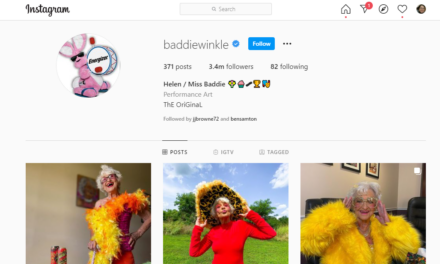
FEBRUARY 10, 2023
5 things to do
Do you know your target audience?
Do you really know who your content is designed to serve?
Not every content entrepreneur does, but every successful one does.
That’s the wisdom shared by Robert Rose, founder and chief troublemaker at The Content Advisory, at Creator Economy Expo.
Without knowing your audience, you can’t determine the best content business model. You can’t answer the questions that will be asked by potential investors, sponsors, and others. So let’s pull from Robert’s advice to figure out how to really know your audience.
1. Recognize bigger isn’t better: Too many creators stop after detailing the total addressable audience – all the people who could have a useful need or want for your content. Robert says that should act as the first step in defining your minimum viable audience.
Next, narrow the total addressable audience to a service addressable audience – people who you really expect to serve or will access your content product. (For example, if TikTok is your platform, an older audience wouldn’t be serviceable because they aren’t watching it.)
Continue to remove segments of that audience, and you will find your service obtainable audience – the portion of the audience you can reasonably expect to capture. That’s your potential share of the market or minimum viable audience.
2. Fill in these blanks: Robert uses a fun technique called jobs-to-be-done (JTBD). He explains the concept with this quote from Theodore Levitt: “People don’t want a quarter-inch drill. They want a quarter-inch hole in the wall.”
To figure out what your audience wants, use this fill-in-the-blank formula:
WHEN (identify a challenge/interest), I WANT TO (how to solve the challenge in some form ) SO I CAN (the result after solving the challenge).
Example: When I need to hang a picture, I want to get a new drill, so I can create a hole in the wall to hang the picture.
As you craft those JTBD sentences, make sure to incorporate the context and emotion involved. In this example, the JTBD ultimately is to relieve the boredom of the commute.
Example: “When I’m rushing to work, and I’m starting my long commute, I’m hungry. But I have no time to stop, and just want something quick, easy, and that tastes good. I want to find something I can have so I feel better about my commute.”
3. Discover your audience: Create as many JTBD statements as you can by talking with your audience as people, not consumers. Ask open-ended questions. Visit their natural habits (in person and/or online). Do what they are attempting to do, so you can better understand how they operate.
4. Detail their stories: Again, this step nicely fits a creator’s skillset. How does your audience discover, try, or learn as it relates to those JTBD statements? They may tell you their needs more clearly, but pay attention to the underlying (or explicit) emotional and social context.
5. Build your audience model: Now you know which “jobs” your audience wants to do. Narrow the list to those that fit your skill set. Then, look into the ones still on the list to see who or what is addressing them now (and doing it well). The remaining jobs present business opportunities.
Now, you can grow a content business around a niche story that is most likely to attract a valuable niche target audience rather than create a business built around a broad topic with a broad audience that may or may not be interested.
– Ann Gynn
Resource: Watch the free on-demand presentation as Robert Rose goes into more detail with examples of the audience identification process.
Meet Robert Rose at Creator Economy Expo 2023. He’ll share more in a session about how to stand out in the sea of sameness.
Sponsored Content
Do you feel like your content business is struggling to reach its full potential? If you’re looking for ways to scale effectively, then mark your calendar for Social Profit Lab – a free, four-day event filled with expert insights and strategies to help you take your content business to the next level in 2023.
With over 40+ experts, including Wave Wyld, Judi Fox, Alex Sanfilippo, Joe Pulizzi, and many more, you’ll learn how to grow your audience, increase sales, delegate effectively, and more. No matter what platform you’re using or what strategies you’ve tried, you’re sure to walk away with valuable tips and techniques to help you succeed.
And the best part? Social Profit Lab is completely free! Register now!
5 things from the tilt
- We need your help for our annual creator economy study.
- Check out Secret – they help entrepreneurs save money on software. Find something new and exciting to grow your business!*
- Newsletters can work well for book authors. Some share how they use a platform like Substack for their business.
- This week Joe talks about the best sponsorship model for creators. [Content Inc. podcast]
- Joe and Robert discuss the future of social media and where to place social bets in 2023. [This Old Marketing podcast]
*The Tilt receives a small commission if readers (at no additional cost) make a purchase using this link.
5 things to know
Money
-
Ask for a buck: Reservation funnels work. People who put down a $1 deposit are 30 times more likely to buy than someone who just gives their email address. (Forbes)
Tilt Take: The research looked at crowdfunding products, but the concept could work well for creators developing distinct content products, such as online courses and digital books. -
Tik targets: TikTok expanded the paid promotion options for creators and other small businesses. You can now encourage messages from audiences, target audiences based on location, and boost content uploaded by collaborating creators. (tubefilter)
Tilt Take: Smart business move for TikTok and TikTok creators investing in growing their audience.
Audiences
-
Stop plank walking: Creators make a mistake when they don’t have a proper onboarding system for new community members. (tchop.io)
Tilt Take: Create a simple and easily executed welcome program when someone joins your community. Check out Tchop.io’s interesting thread on the mistakes made in communities.
Tech and Tools
-
Tl;dr: Twitter Blue subscribers can now type 4K characters. (Twitter)
Tilt Take: Not surprisingly, Twitter used the announcement tweet to show why so many characters aren’t a good thing. (And it only used about 1.3K characters to do that.)
And Finally
-
AI answers: BuzzFeed says it will use the AI content tool ChatGPT to help create quizzes that customize the responses based on the quiz-taker’s input. (CBS News)
Tilt Take: We like this idea. Personalized content outperforms generic content, but it can be problematic to customize everything by human hand.
We all know part of running your business is dealing with the finances and taxes. Do you find yourself needing help or advice with your business’s finances?
Look no further than Be Your Own CFO, a finance newsletter for entrepreneurs written by an entrepreneurial CPA. Take your growing company to the next level with down-to-earth insight into tax strategy, bookkeeping, and software.
Sign up today for inspiring content that combines the raw power of finance with the human element of running a company and become your own CFO.
Please Help Spread The Tilt Message!
Refer a fellow content creator to The Tilt and earn exclusive swag!
*Please note the rewards program is only available to US readers at this time. The Tilt reserves the right to reject referrals at their discretion.
the tilt team
Your team for this issue: Joe Pulizzi, Pam Pulizzi, Ann Gynn, Laura Kozak, Marc Maxhimer, and Dave Anthony.
Get more of the Full Tilt stories on TheTilt.com.
Know a content creator who’s going full tilt? DM us or email [email protected]
Want to advertise on The Tilt? Go here.
Or email us at [email protected]
Interested in the tools we use? Check out our Tilt Tech Stack here.
Was this email forwarded to you? Get your own sub here.
Copyright ©2023 Tilt Media LLC All rights reserved.
Update your preferences | Unsubscribe | 17040 Amber Drive, Cleveland, OH 44111





